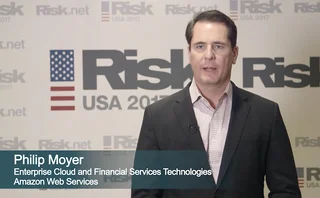
Summing up VAR
There are a number of approaches to building the IT systems architecture required for historical simulation value-at-risk implementations. What are the pros and cons associated with these architectures? And why does the risk-aggregator approach overcome some of the issues with many of the more traditional architectures? By Christopher John Brickhill

If the historical simulation methodology is selected as the methodology for the determination of an institution’s value-at-risk, or HSVAR, then there are a number of architectures for market risk systems. These are:
Transaction data from the databases used by front-end treasury systems is copied to a risk database and the risk calculations performed on the copy (See diagram 1: traditional architecture) The transaction data remains where it is, in the databases of the treasury front-end andOnly users who have a paid subscription or are part of a corporate subscription are able to print or copy content.
To access these options, along with all other subscription benefits, please contact info@risk.net or view our subscription options here: http://subscriptions.risk.net/subscribe
You are currently unable to print this content. Please contact info@risk.net to find out more.
You are currently unable to copy this content. Please contact info@risk.net to find out more.
Copyright Infopro Digital Limited. All rights reserved.
As outlined in our terms and conditions, https://www.infopro-digital.com/terms-and-conditions/subscriptions/ (point 2.4), printing is limited to a single copy.
If you would like to purchase additional rights please email info@risk.net
Copyright Infopro Digital Limited. All rights reserved.
You may share this content using our article tools. As outlined in our terms and conditions, https://www.infopro-digital.com/terms-and-conditions/subscriptions/ (clause 2.4), an Authorised User may only make one copy of the materials for their own personal use. You must also comply with the restrictions in clause 2.5.
If you would like to purchase additional rights please email info@risk.net
More on Risk systems
Chartis RiskTech AI 50 2024
A Chartis report exploring the landscape of artificial intelligence and its adoption in the financial services
Identity verification solutions 2023: market and vendor landscape
This report analyses the current identity verification solutions landscape and examines the key market trends, regulatory drivers and vendor strategies shaping it
Taking the lead on financial crime regulatory compliance
Increased scrutiny of anti-money laundering and customer due-diligence procedures means banks must create more efficient and effective systems. A recent webinar conducted by Risk.net and IBM discussed how leading banks are utilising artificial…
AI wide open
The Risk Technology Awards 2018 have highlighted how new technologies are bringing recognition for vendors
Murex moves flagship trading and risk system on to cloud
Vendor expects more demand from squeezed banks; move also hints at modular future for risk systems
Sponsored video: Philip Moyer, Amazon Web Services
Philip Moyer, Enterprise Cloud and Financial Technologies, Amazon Web Services, discusses the biggest government, regulatory and compliance (GRC) challenges organisations face today, how moving to the cloud can help firms prevent potential cyber attacks…
Cloud control
Sponsored feature: OpenLink
Algorithmic execution: Harnessing technology to manage risk
Sponsored feature: HSBC








